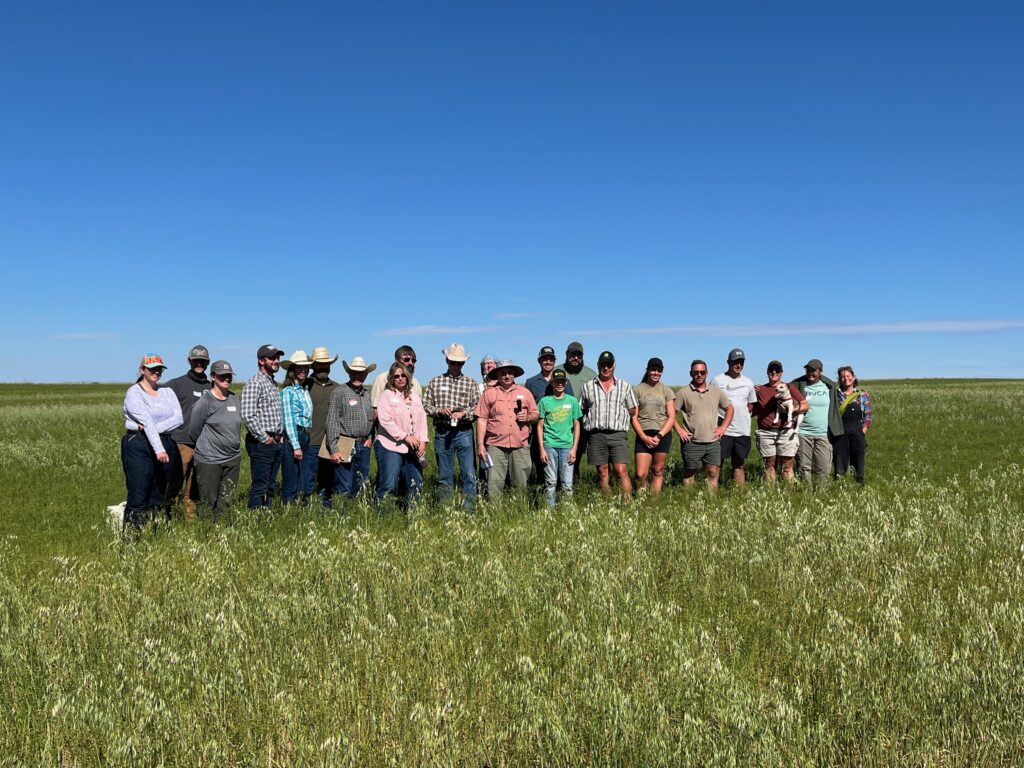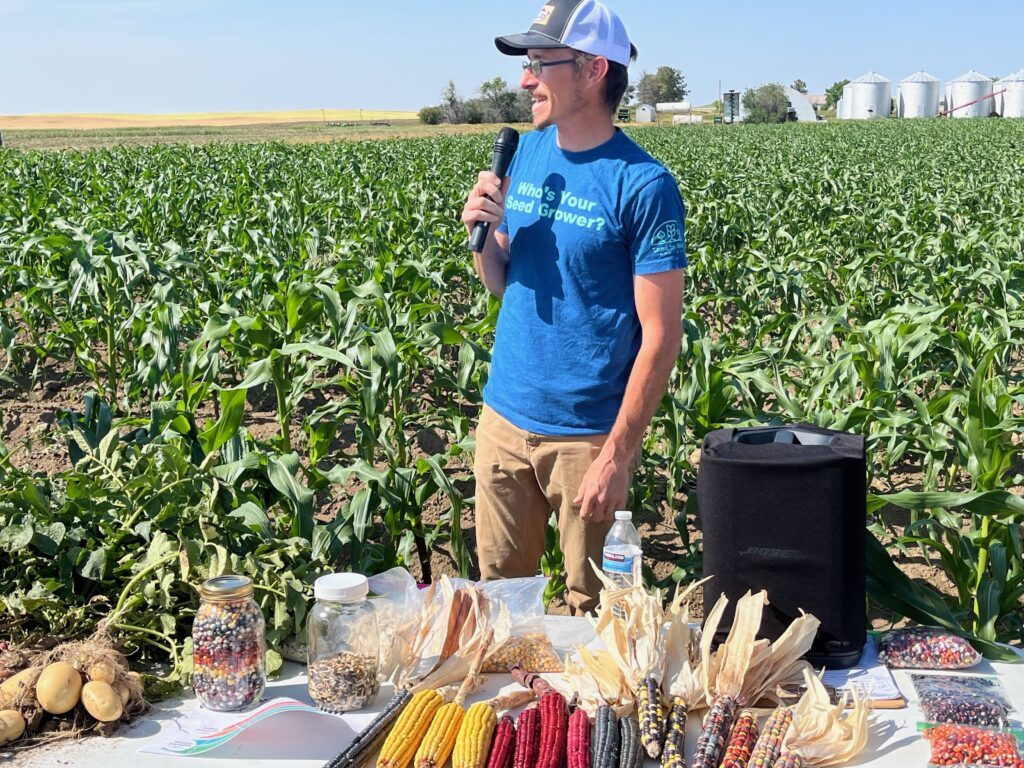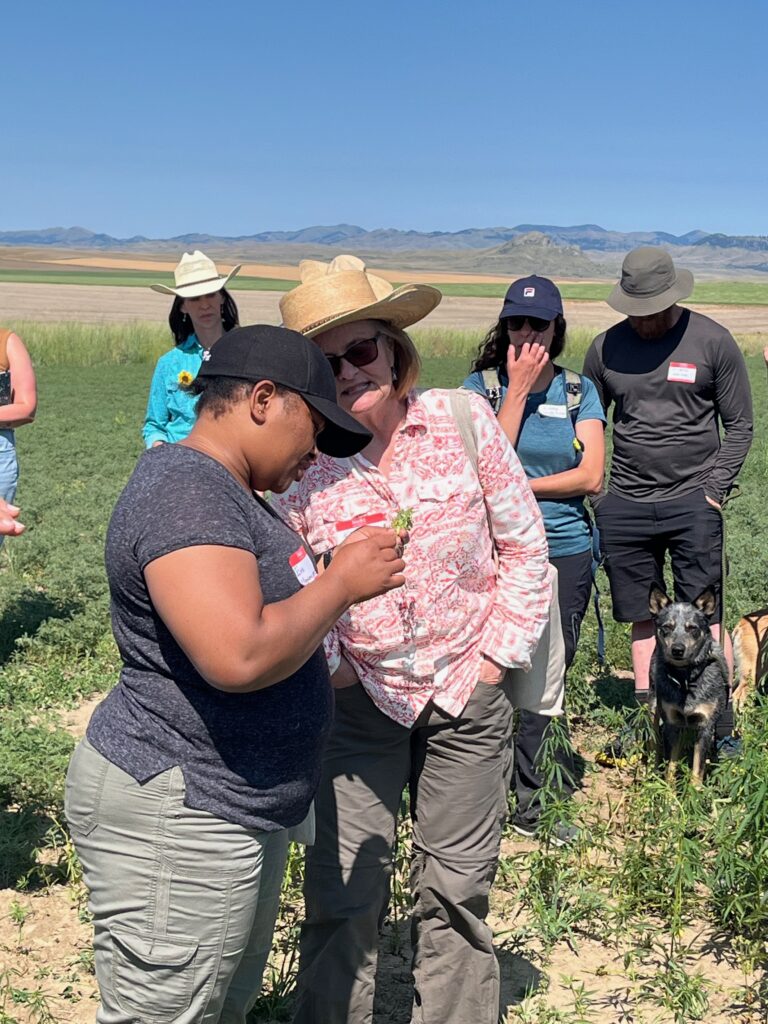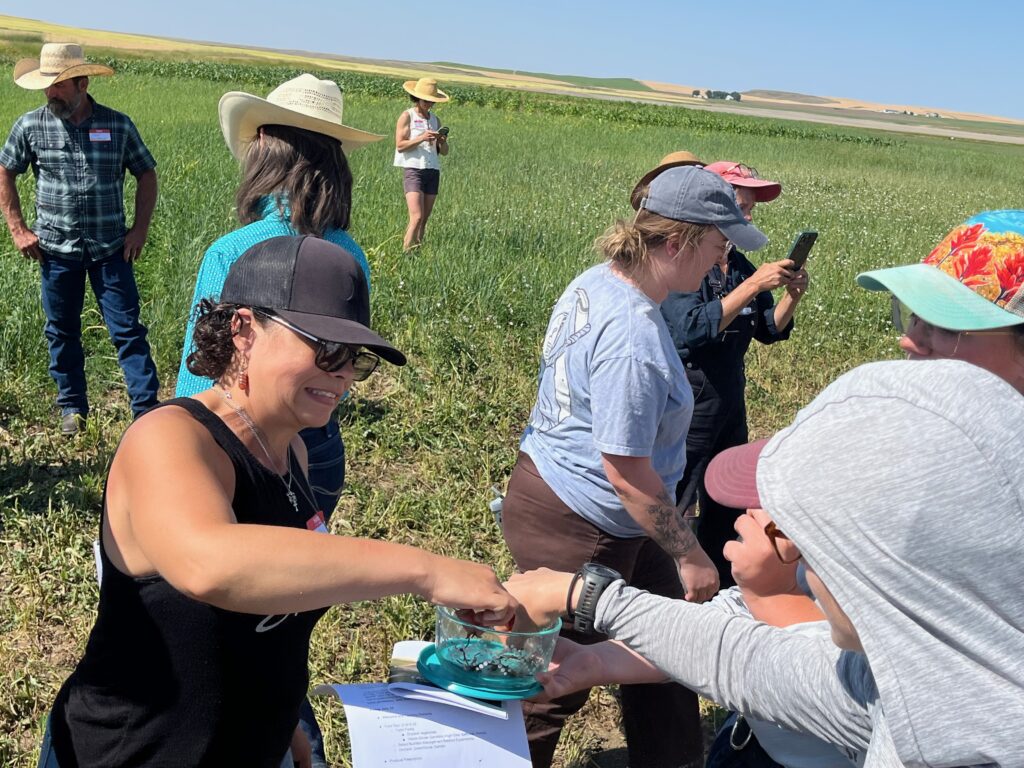
Crunch. Crunch. Crunch. The sounds of 50 pairs of boots and shoes walking across dryland lentil fields in Northern Montana in July. Farmers, doctors, and supporters of regenerative agriculture converged.
The first annual On-farm Summit just occurred at the Quinn Institute (Big Sandy) and Vilicus Farms Institute (Havre), combining the topics of human health, nutrition, climate change, and regenerative agriculture. “Food as medicine begins in the fields,” notes Bozeman Physical Therapist Esther Smith of Farm to Crag. Attendees from across Montana, other states, and even Canada to experience the benefits of regenerative, organic agriculture and learn how promotion of local foods can benefit both the state’s economy and human health. Counties with “organic hotspots” have a higher mean average income, notes Anna Crabtree of Vilicus Farms.
“We’re collaborating to promote the health, security, and economic well-being of Montana’s future generations,” adds Robin Kelson of Abundant Montana. Abundant Montana and many other non-profits in Montana have a “33 x 33” initiative: to see 33 % of the food eaten in Montana grown in Montana by 2033.
Organized by Abundant Montana, Farm to Crag, and Montana Health Professionals for a Healthy Climate, this unique, 2-day event drew passionate people together who care about food, health, nutrition, and care about Montana. Participants engaged in field tours showcasing organic farming techniques, including dryland vegetables, crop rotation, and health-driven genetics. Representatives from the Chippewa Cree explained their “food as medicine” program. Topics included the economics of stewardship, food education, and how health providers can support resilient, local food and farming systems, and foster meaningful conversations building healthier communities.







